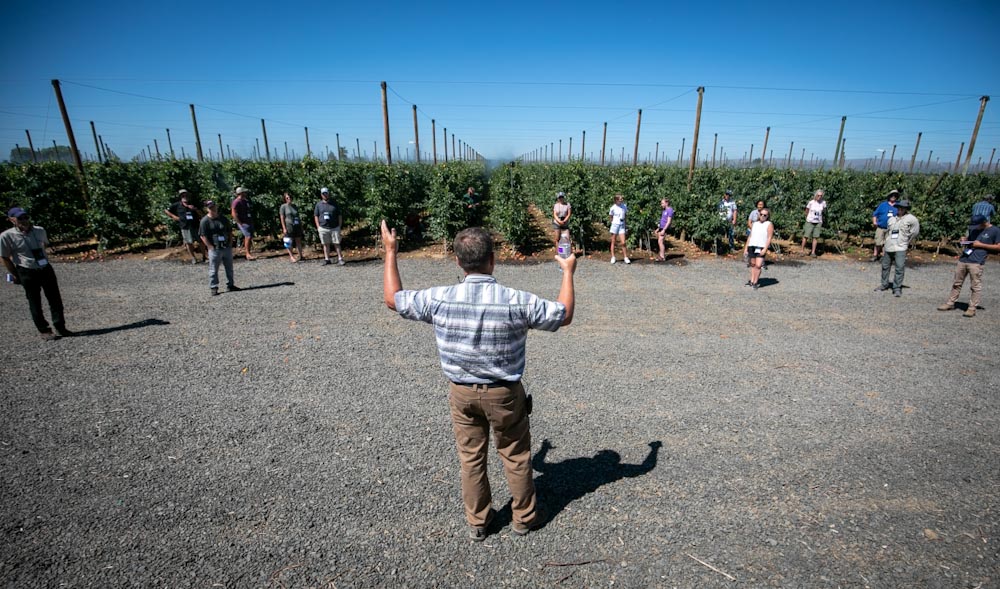
The second day of the International Fruit Tree Association’s 2022 summer tour centered in Quincy, Washington, where orchards, potatoes and other row crops grow in deep, productive soil.
There’s so much good topsoil, and high levels of residual nitrogen from the row crops that preceeded the orchards, that it can be difficult to control the vigor in Honeycrisp. Grower Kent Karstetter hosted attendees at a 2012 planting of Honeycrisp on M.9-377 roots, planted at 2.5 feet by 10 feet.
“We were 104 bins an acre last year; we’ve been 101 and 94 before that,” he said, noting that it’s probably too high. “I’ve been trying to suck the energy out of the tree.”
Karstetter farms with two of his sons, Mitchell and Brady, who have pushed him to adopt new approaches and technology, he said. Mitchell said they now use an automated irrigation system to run short, frequent sets, trying to create some light irrigation stress at times to help control vigor. But he cautioned against drying out the trees too much, because then they can’t take up any calcium.
Next, the bus headed to a Premier Honeycrisp block owned by McDougall and Sons, where co-owner Scott McDougall, area manager Dave Chism and orchard manager Martin Gil discussed the pros and cons of netting when it comes to the balance of sunburn protection and color development.
The Premiers harvest early, which makes that issue even more critical, McDougall said. So, they wanted a system they could open up to get color within a week or two before harvest, when a favorable weather window promised low sunburn risk. But there’s a real risk in the forecast changing, so they developed a retractable system in which three workers can open or close all the net panels over the 11-acre block in a day, without the need for equipment.
It was expensive ($14,000 per acre) to retrofit for netting in the existing orchard, Chism said, but now the operational costs should be low.
Washington State University physiologist Lee Kalcsits has also begun a trial to assess whether the color gains in Honeycrisp achieved by retracting the netting outweigh the risk of sun damage. He said that in his first year of data, retracting the netting 7 or 14 days before harvest made no difference. Both timeframes delivered significant boosts in color, he said, and a slight increase in sunburn — enough that the value of the color gains would easily outweigh the lost packout.
Kalcsits spoke at an orchard that hosted his trial. It’s covered with a more traditional netting system, where workers on scissor lifts have to take the panels down. The managers of Monument Hill — a 650-acre institutional, investor-owned orchard developed in 2016 — said they also use evaporative cooling to reduce the sunburn risk when the nets are off of their Premier Honeycrisp.
Vigor is also a challenge for Honeycrisp at this site, said Tom Gausman of AgriMACS, the management company that farms the orchard. They planted Honeycrisp on G.890 in a V-trellis system, in hopes “the extra horsepower” would be a benefit in an organic production system, Gausman said. Instead, they now farm the block conventionally and use deficit irrigation, guided by tree and soil sensors, to control vigor and fruit size.
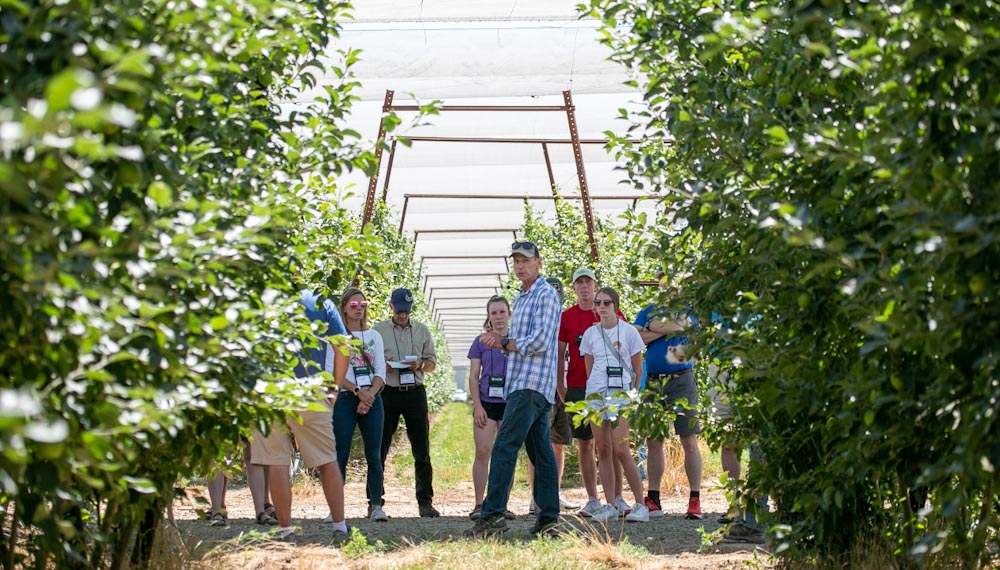
“I love 890 for Honeycrisp on replant sites, but I wouldn’t do that again here on this vigorous soil,” he said.
Vigor management continued to be a theme at the last orchard visit, where grower Dale Goldy introduced attendees to a block of HW 624, a Canadian-bred pear marketed as Happi Pear, planted at 4-foot by 6-foot spacing. Yes, you read that right.
Goldy, who co-owns a nursery and orchard business, has recently been pushing the envelope on density. He also showed the tour a block of Minneiska, the apple marketed as SweeTango, planted with 3.5-foot tree spacing and 6 feet between rows. The trees were planted as 7-foot-tall nursery trees, already filling the vertical space Goldy allotted them.
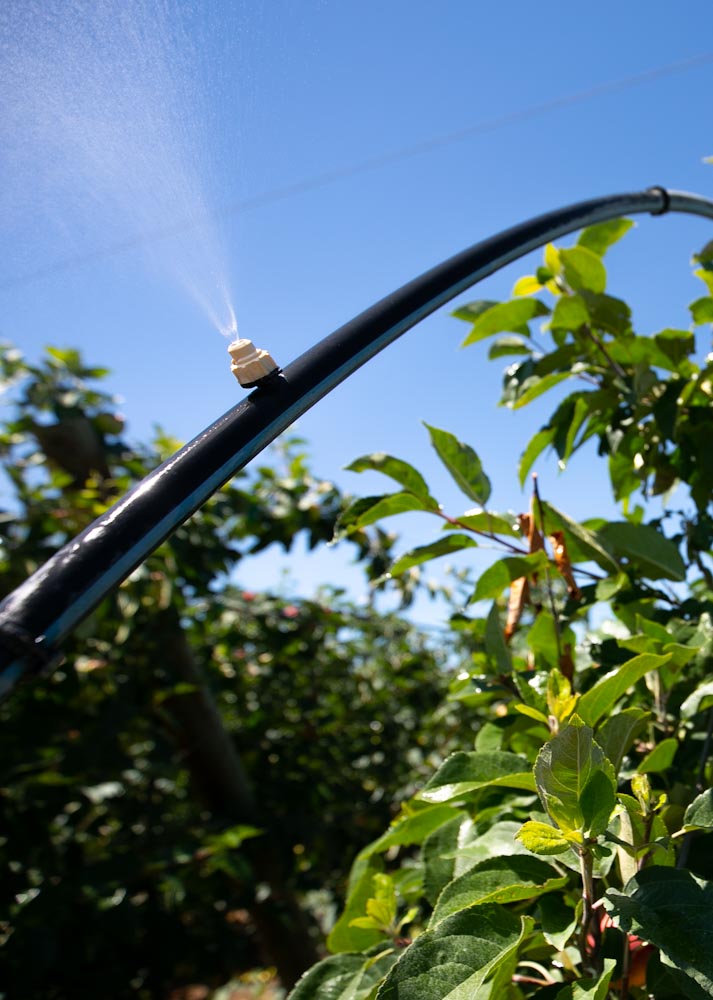
Keeping the trees short and the rows narrow allows more light penetration, he said. The block was inspired by earlier Minneiska plantings where he and other growers found all the best fruit production was in the narrow tops of the trees. Now, that’s all he is trying to grow.
Farming on 6-foot rows requires specialized equipment, so Goldy showed the group his 4-foot-wide nursery tractors, which pull custom-built, over-the-row sprayers. That means the drive time for spraying is the same as in a 3-by-12 planting, he said.
He also uses custom-built bin trains that ferry six workers and three bins slowly down the row at optimum picking height. All the equipment was built by Automated Ag of Moses Lake, which hosted the IFTA tour for dinner on Monday.
On Tuesday, the tour group stopped for lunch and a tour at Starr Ranch Growers’ warehouse and packing facility. Jeff Cleveringa, the head of research and development for Starr Ranch, led the group on a tour of the new packing line installed in 2020.
—by Kate Prengaman

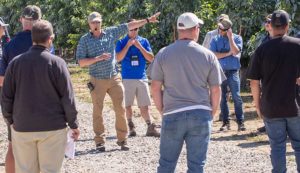
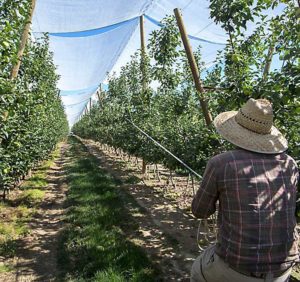
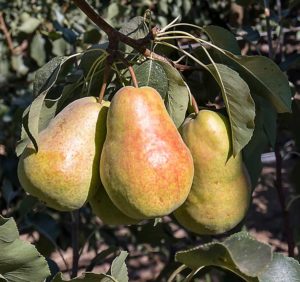
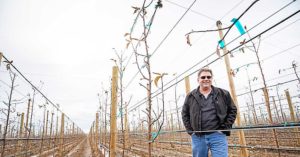





Leave A Comment